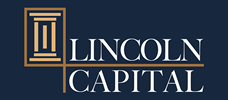Highlights
- Bi-partisan legislation passed in December 2022 changes retirement account rules
- The changes were designed to increase retirement savings
- From RMDs to student debt, the new law has something for everyone
Estimated read time: 3 mins
On December 23, 2022, President Biden signed into law a $1.7 trillion budget bill that includes bipartisan retirement legislation: the SECURE Act 2.0, building on the previous SECURE Act.
The act changes existing retirement account rules allowing additional tax savings and incentives to savers. While there are more than one hundred provisions included in the bill, we highlight several key changes that could impact your retirement savings this year and in the coming years.
For Those In or Near Retirement
Changes to Required Minimum Distributions (RMDs)
The prior SECURE Act (1.0) raised the Required Minimum Distribution age from 70.5 to 72 beginning January 2020. A RMD is the amount of money that must be withdrawn annually from an employer-sponsored retirement plan, traditional IRA, SEP or SIMPLE IRA, by the owner once a certain age is obtained. Act 2.0 now raises the RMD age to 73 and further to 75 in 2033.
The penalty for failing to take an RMD will decrease to 25% (from 50%) of the RMD amount not withdrawn. The penalty can be further reduced to 10% if the amount is subsequently withdrawn and the owner submits a corrected tax return in a timely manner. Additionally, Roth accounts in employer-sponsored plans will be exempt from the RMD requirements beginning in 2024.
Increased Catch-up Contributions
For years, retirement plan participants over age 50 have been able to make an additional annual contribution, currently $7,500, to their workplace plan. In 2025, this will increase to $10,000 for participants aged 60 to 63. If you earn over $145,000 annually, these contributions must be made to a Roth account.
For Those Years Away from Retirement
Automatic Enrollment for All 401(k) and 403(b) Plans
Automatic enrollment into these employer-sponsored plans have been shown to increase participation. Beginning in 2025, SECURE 2.0 requires automatic enrollment into all employer-sponsored plans. The initial default rate of contributions must be between 3% – 10%, including an auto-escalation of 1% annually to a maximum of 15%. There are exceptions for small and new businesses.
Beginning in 2024, these plans can add an emergency savings component that is a designated Roth account for non-highly compensated employees. Contributions would be limited to $2,500 annually, and the first 4 withdrawals per year would be tax and penalty-free.
Employer Matching Student Loan Payments for Retirement
Many new graduates struggle to pay student loan debt and save for retirement at the same time. Starting in 2024, employers will be able to “match” student loan payments with matching payments to a retirement account.
529 Plan to Roth Rollovers
If a 529 balance remains in an account for at least 15 years, up to $35,000 of it can be rolled over to a Roth IRA for the beneficiary beginning in 2024, essentially converting college savings into retirement savings without taking the tax and penalty hit.
Honorable Mentions
Other provisions include a retirement savings “lost and found” that allows participants to search for contact information for old plan administrators, expanded credits for employers who start retirement plans, and a provision that makes it easier for annuities to become an option for retirees. While every person’s financial situation is different, Congress has made it a point in the passing of SECURE Act 2.0 to provide increased savings opportunities for retirement.
Please view us as a resource for all your financial planning questions and needs, and as always, please contact us if we may be of assistance.
About the Author
Alex Albert is a Certified Financial Planner for East Greenwich-based Lincoln Capital, a financial planning and wealth management firm. He is a graduate of the University of Rhode Island and earned CFP® certification from Bryant University.
